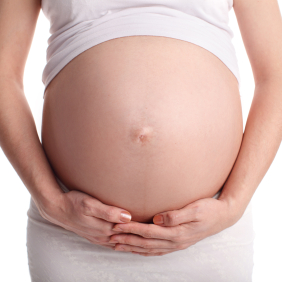Protecting Ovary Function During Breast Cancer Chemotherapy
The risk of early, sudden-onset menopause in women treated for early-stage breast cancer can be reduced with goserelin, a gonadotropin-releasing hormone agonist.
Goserelin could protect ovary function in breast cancer patients

The risk of early, sudden-onset menopause in women treated for early-stage breast cancer can be reduced with goserelin, a gonadotropin-releasing hormone agonist.
In the large international Prevention of Early Menopause Study (POEMS), the addition of goserelin to an adjuvant chemotherapy regimen mitigated the risk of early menopause and helped to preserve fertility in women under the age of 50.
The phase III trial evaluated 218 women with stage I to stage III hormone receptor–negative breast cancer and was conducted by the Southwest Oncology Group in collaboration with the National Cancer Institute. The results were published in the New England Journal of Medicine.
While 22% of women in the chemotherapy-alone arm stopped menstruating or had reduction in estrogen production and egg supply, only 8% of women who received goserelin with chemotherapy had these symptoms (odds ratio, 0.30; P = .04).
Among the 218 women who could be evaluated, there were more pregnancies in the goserelin-treated group compared with the chemotherapy-alone group-21% vs 11%, respectively (P = .03). Of the 18 women in the chemotherapy-alone group who tried to become pregnant, 12 reached that goal and 8 delivered at least one baby. Of the 25 women in the goserelin-treated group who tried to become pregnant, 22 reached that goal and 16 delivered at least one baby. Miscarriages, elective terminations, and pregnancy complications were similar in both treatment arms.
The median age of the 218-patient cohort was 37.7 years and 36.9 years for the 135-patient cohort that was evaluated for the 2-year primary endpoint. About half of the patients had stage II disease, and 15% were HER2-positive.
The addition of goserelin also appeared to improve disease-free survival (P = .04) and overall survival (P = .05). After 4 years, 78% of those in the chemotherapy-alone arm had no signs of symptoms of cancer compared with 89% in the goserelin-treated arm. Four-year overall survival was 82% and 92% in the control and goserelin treatment arms, respectively.
Patients on trial received between 3 and 6 months of preoperative or postoperative chemotherapy containing alkylating agents. The patients were stratified into cohorts of women aged 40 years and younger and women aged 40 to 49 years. Patients received 3.6 mg of goserelin as a subcutaneous dose every 4 weeks beginning 1 week prior to the first chemotherapy dose, continuing on to within 2 weeks before or after the last chemotherapy dose.
Goserelin-treated patients did not appear to have an increase in side effects. About 5% and 7% of the control and goserelin-treated patients had grade 3 or higher adverse events (P = .89).
According to Kutluk Oktay, MD, director of the Division of Reproductive Medicine and Institute for Fertility Preservation at New York Medical College in Valhalla, New York, the study has many limitations. “Women should not rely on this approach as a sole method of fertility preservation,” Oktay told Cancer Network. “In our institute, we treat many women who experienced ovarian failure after use of ovarian suppression and now have no other choice than using donor eggs because they did not resort to any egg or embryo freezing procedures, having believed that ovarian suppression would be sufficient.”
Among the limitations, said Oktay, is the availability of data from only about 50% of the patients-only 135 patients could be evaluated for the primary endpoint. Although there was no evidence that missing data affected the study outcome, there was missing information on 83 patients, 14 of whom died within the 2-year time frame of the trial, 5 who were lost to follow-up, and 64 who had insufficient data.
Additionally, ovarian failure at 6 months, rather than the standard 12 months, was evaluated and menstruation was not clearly defined, according to Oktay. Furthermore, the study was not blinded. “In a non-blinded study without a placebo, women who receive treatment may be more likely to report any bleeding as menstruation. Irregular bleeding can still occur in perimenopausal women,” said Oktay.
“Given these design issues, and that prior studies utilizing more sensitive ovarian reserve markers did not find any difference and given the fact that the primordial follicle oocytes that make up the ovarian reserve are not hormone sensitive, I am not convinced of the benefit of ovarian suppression in preserving ovarian function,” Oktay told Cancer Network.